Just this year, motorcycle racing team Ducati Corse named 3D printer maker Roboze as its new technical partner. Meanwhile, in Formula 1, Alfa Romeo partnered with Additive Industries, EOS, and Camozzi Group for the 2022 season, while NASCAR just partnered with 3D printing giant Stratasys, which is also the 2022 official partner of Toyota Racing Development. Why are all these motorsports teams taking 3D printing companies under their wing?
The answer is simple — 3D printing helps them win. Additive manufacturing’s capability to shorten innovation cycles and produce sturdy, lightweight, and aerodynamically optimized parts helps cars, bikes, and even jet engines shave precious seconds off lap times.
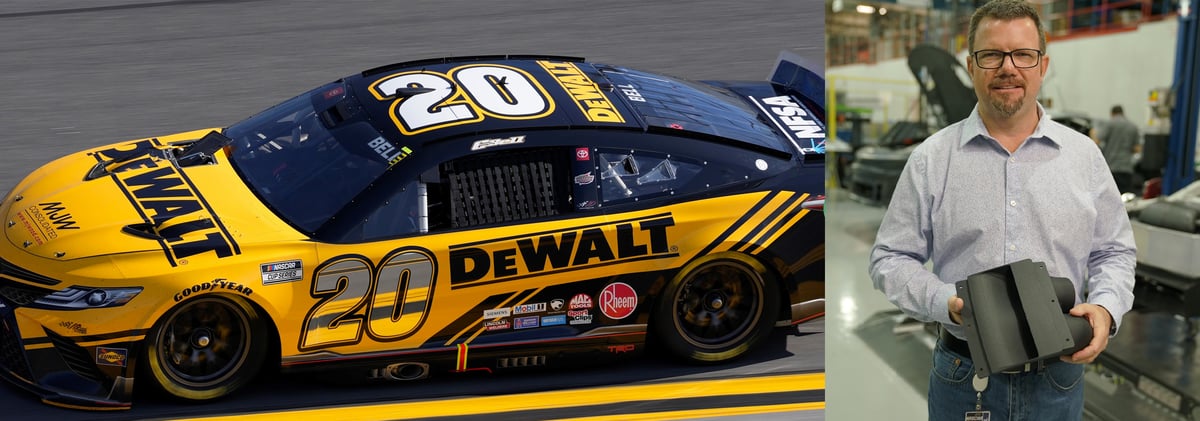
In fact, any manufacturer interested in 3D printing should pay attention to motorsports. This field is a prime example of how once cutting-edge innovations can transition to general production. After all, many now-basic car components — like disc brakes and even rear-view mirrors — originated in race vehicles.
Here we’ll explore the benefits 3D printing brings to motorsports, alongside many specific examples and case studies from successful racing teams.
Why Motorsports Love 3D Printing

Additive manufacturing technologies are becoming increasingly widespread in motorsports. As a result, various motorsports organizations are starting to recognize 3D printing. As an example of such recognition, the 2022 MotorsportAM event — a meeting showcasing the latest additive manufacturing innovation in motor racing — was held at the British Motor Museum, which houses the UK’s largest historical automotive collection.
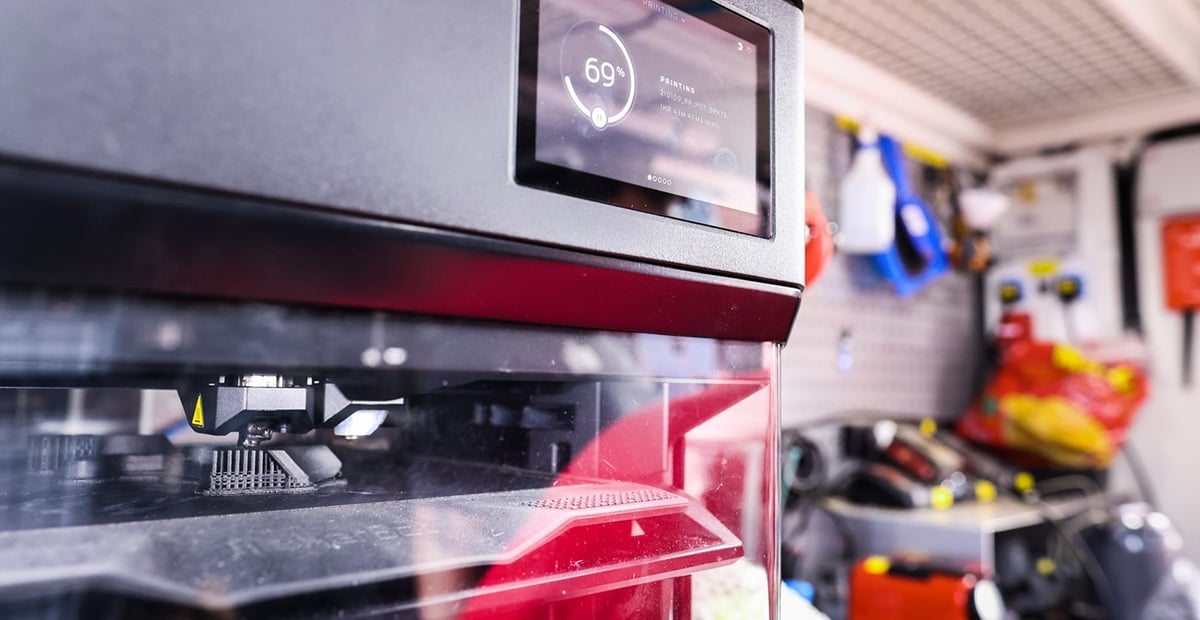
3D printing serves several end goals in motorsports. It’s used everywhere from the first stages of part and vehicle design to the manufacturing of the final on-vehicle components. It can even bring long-forgotten cars back to the race track after several decades.
However, motor racing is a sport, and there are rules to follow. This can sometimes limit the applicability of 3D technologies. For example, the Fédération Internationale de l’Automobile (FIA), the governing body of F1 racing, changed its rules regarding aerodynamics for the 2022 season. The changes invalidated many 3D printed components that had been used the year before. But both racing teams and their 3D printing partners have adapted — instead of producing aerodynamic parts, they now focus on using additive manufacturing to produce function-critical internal components, like brackets, supports, and seals.
The past and forthcoming innovations aren’t just set to benefit racing and personal automobiles and motorcycles, however. Motor racing provides an ideal testing environment for new manufacturing technologies. Racecar parts must be able to endure great mechanical stress, high heat, and extreme abrasion from chemicals and wear, all the while being quick to produce. As such, all manufacturing industries stand to learn valuable lessons from these applications.
Case Studies of 3D Printing in Motorsports
The most significant use cases of 3D printing in motorsports include part redesign, making parts weigh less, using more advanced materials, producing spare parts on the go, and of course, churning out faster prototypes.
Geometry Optimization
CAD and 3D printing enable racing teams to use technologies such as simulation software, iterative design, and topography optimization to find ideal part geometries. This helps them improve the aerodynamics of their vehicles, reducing drag and air resistance and consequently increasing maximum speeds. Simply changing the shape of a motorcycle fairing can increase its top speed by 4 km/h.
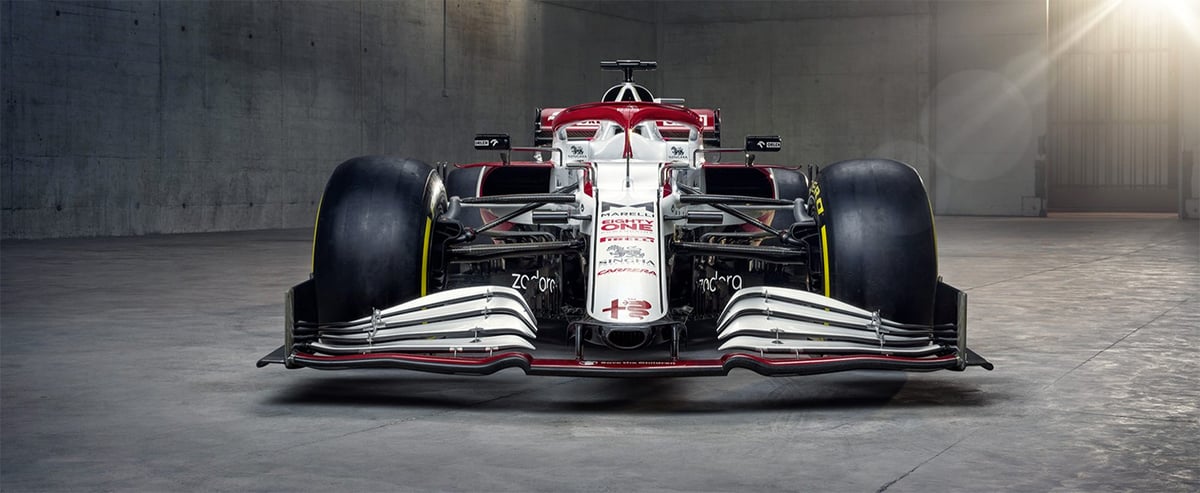
Lightweighting
3D printing can produce parts from high-performance thermoplastics that provide comparable or better mechanical characteristics when compared to metal but are significantly lighter. Additive manufacturing also enables the creation of complex geometries, such as lattice structures, that are impossible for traditional manufacturing. As a result, racing teams can build lighter vehicles that reduce fuel costs and achieve higher speeds.
Material Improvements
Just because a part has always been made out of metal, doesn’t mean metal is the only material option. 3D printing unlocks the possibility to use better materials for novel purposes, or even develop completely new ones. For example, Roboze and Ducati have developed a new ceramics-reinforced PEEK material with high temperature resistance that’s ideal for high-end racing motorcycles.
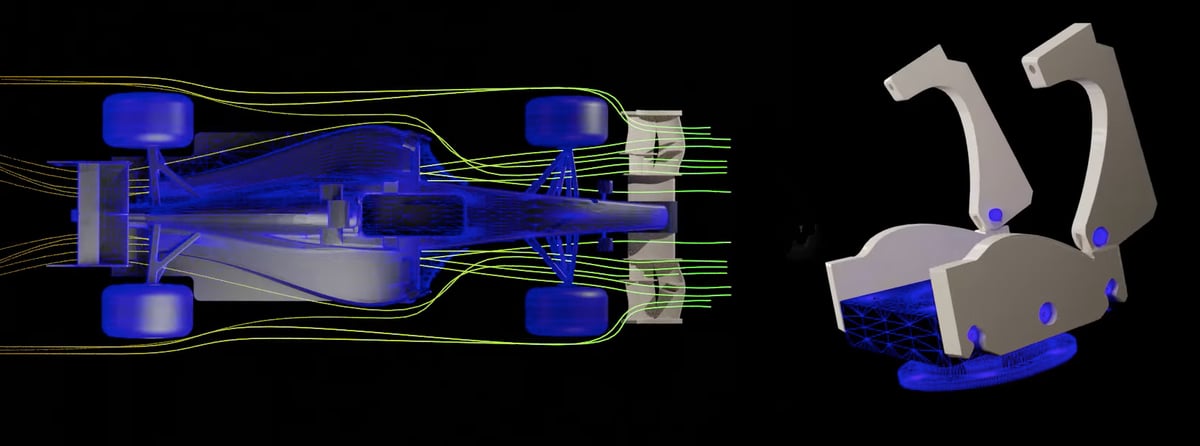
Prototyping and R&D
Manufacturing part and vehicle prototypes through traditional methods can be both expensive and slow. With 3D printers, racing teams can rapidly produce dimensionally-accurate prototypes to test new part configurations in wind tunnels or trial assemblies. Additive manufacturing allows them to cut lead times from weeks to days or hours while slashing production costs by as much as 90%.
Producing Spare Parts
When a part breaks on a racing vehicle, it must be changed fast. But maintaining constant standing inventories is expensive. Additive manufacturing enables on-demand production of parts before a race, which allows teams to have exactly as many parts on hand as they need, whenever they need them. Additionally, 3D printing makes it possible to produce spares that have gone out of production potentially decades ago.

Reverse Engineering
Tight tolerances and fits are crucial for maintaining a race vehicle’s aerodynamics. Racing teams can use 3D scanning technologies to quickly digitize single parts or even an entire vehicle chassis. This helps them improve existing designs and create new ones, produce out-of-production components, and find new ways to manufacture parts.
Roboze & Ducati Corse

3D printing can be more than just a handy tool in motorsports companies’ arsenal — it can be thoroughly integrated into their part development and testing workflows. As an example, 3D printing company Roboze joined its fellow Italian motorcycle manufacturer Ducati as a technical partner for the 2022 MotoGP season.
Ducati Corse, the bike maker’s racing team, isn’t new to 3D printing, though. Luigi Dall’Ihna, Ducati Corse general director, is a long-time supporter of additive manufacturing. He’s been using and advocating for 3D printing in component prototyping since he joined Ducati in 2013.
Thanks to such innovative approaches, Ducati won the constructors’ championship title in both 2020 and 2022. This new partnership, however, goes beyond just prototyping. With Roboze’s technology, Ducati aims to take its Desmosedici motorcycle to the next level.
“Thanks to Roboze’s 3D printing technology for super polymers and composites, we have been able to significantly speed up the production of aerodynamic components with incredible mechanical properties,” said Riccardo Savin, Ducati Corse vehicle dynamics and design manager.
Among those composites will be Roboze’s new Helios PEEK 2005 material. Announced in early 2022, Helios is a PEEK matrix composite material, filled with ceramic fibers. The material is stable at high temperatures, provides high thermal and electrical insulation, and has a fine surface quality. These features make it suitable for motorcycle components, like fairings and heat shields.
In addition to providing materials and prototyping tools, Roboze will also help Ducati in component design. With Roboze’s help, Ducati is set to optimize the aerodynamics of motorcycle parts and reduce assemblies to speed up production and cut down on bike weight.
Additive Industries, EOS, Camozzi Group & Alfa Romeo

The Alfa Romeo Racing Orlen, a Formula 1 team under Sauber Group, is integrating additively manufactured components into their C42 race car for the 2022 season. Recent regulation changes in the F1 series have forced Alfa Romeo to cut back on the number of aerodynamic 3D printed components.
However, the team is still working with Additive Industries to produce application-critical parts using the latter’s MetalFAB1 printers. In total, AM components are set to make up roughly 1% of the C42 car’s total weight of 1,752 pounds.
This partnership is nothing new, though. Sauber has been using 3D printed plastic components since the late 2000s. Their collaboration with Additive Industries started already five years ago in 2017.

For example, Alfa Romeo’s 2021 C41 race car featured 304 3D printed parts, which reduced related costs by 90%. Among the components were two front suspension inserts in the front of the car chassis. These inserts help attach the front suspension assembly to the car and to ensure the front wheels don’t break free of the chassis during suspension failure.
Additive Industries printed the inserts using titanium. The metal material can withstand high fatigue and alternating load during intense racing. To achieve optimal performance, Additive Industries ran several simulations and went through many design iterations using topography optimization.
As a result of the design process, Additive Manufacturing combined the multiple parts making up the original suspension insert into one component. Consequently, the part is not only lighter but also faster to produce, as Sauber can print multiple inserts in one print. The AM manufacturing process has also slashed the production costs by nearly $1,900 per insert.
Many 3D printing companies focus on fairly narrow application ranges. To make the most out of the technology, motorsports companies may have to partner with several of them to harness their collective experience.
Sauber/Alfa Romeo has realized this and in February 2022, the racing team unveiled a new technological and sporting partnership with Camozzi Group, the parent company of Ingersoll Machine Tools, which specializes in building advanced production systems with both additive and subtractive manufacturing capabilities.
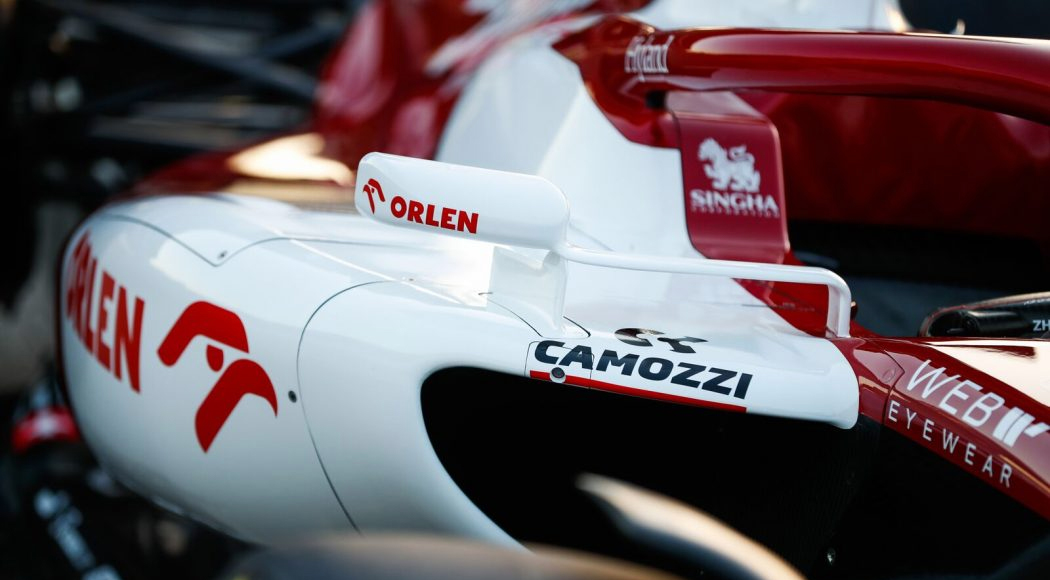
According to Sauber, Camozzi will help produce the sidepod air inlets for the 2022 C42 car, which Valtteri Bottas and Zhou Guanyu will race throughout the season. Camozzi started working with F1 teams in 1985 but has since then pulled out of the series. Now, the company is making a return to F1 with both its traditional and additive manufacturing knowledge.
Sauber and Camozzi haven’t gone into details publicly about what their partnership entails. However, Sauber said their collaboration is set to benefit not only motorsports but also the wider automotive world.
“The Camozzi Group is a natural fit for us: they have a long history of excellence in Formula 1 and they understand our requirements and need for precision and excellence. In addition, there are many potential crossovers between their work and that of Sauber Technologies,” said Frédéric Vasseur, team principal of Alfa Romeo F1 Team Orlen.
Considering Sauber’s past ties with BMW and Mercedes-Benz, perhaps we can hope to see some fruits of this venture eventually make their way to personal vehicles.
Just announced in May 2022, Suber will also partner with EOS, the German 3D printer maker in a three-year additive manufacturing technology partnership. Sauber will be installing an EOS P 500 system in 2022, enabling them to scale up applications towards serial production in the future, with an option to include automation solutions. They will initially use the Polyamide 12 PA 2200 material.
Stratasys & McLaren, NASCAR, Toy

McLaren has won eight constructors’ championships and 12 drivers’ championships in F1. As such, they know a thing or two about how to make an F1 car. Their partnership with Stratasys is one element of that winning formula.
“Keeping abreast of the latest technologies is fundamental to our success and sustained performance. 3D printing is no different and partnering with Stratasys keeps us at the forefront of FDM and PolyJet manufacturing,” explained Pier Thynne, McLaren production director.
McLaren uses additive manufacturing in all phases of its F1 car development pipeline, from prototyping and R&D to car parts and custom tools production. In prototyping, McLaren has harnessed Stratasys’ transparent VeroUltraClear material. The clear material allows engineers, for example, to see how parts slot together or to optimize the amount of adhesive in glued joints.
The racing team also utilizes computer simulation to achieve ideal part topographies. Combined with wind tunnel tests, McLaren engineers can create parts that are lighter, more durable, and more aerodynamic.
But McLaren also produces end-use parts using 3D printers. For example, the team 3D printed an aerodynamic scoop and vanes using a carbon fiber-reinforced Nylon 12 material. The additive manufacturing process reduced the parts’ lead time from 29 days to 5 days, while also cutting associated costs by roughly 25%. In another case, 3D printing front brake ducts reduced lead times by 60% and cost by 85% when compared to traditional manufacturing.
“Using additive manufacturing, rather than machining metal or polymer, allows us to achieve a component quickly with less personnel involved. Less time, fewer people, less material, less wastage,” summarized McLaren design & development director Neil Oatley.
In May, 2022, Stratasys announced a new initiative to collaborate with NASCAR to bring the first 3D Printed production parts to NASCAR next fen race cars.
NASCAR teamed with Stratasys Direct Manufacturing to print a windshield air cockpit ventilation unit for the Next Gen car. The windshield air ducts were printed at Stratasys’s Belton, Texas, facility on the Stratasys H350 3D printer which is specifically designed for production volumes. The parts were printed using Stratasys High Yield PA11, which is derived from sustainable castor oil. The parts were cleaned, finished, dyed and shot-blasted using DyeMansion post-processing equipment.
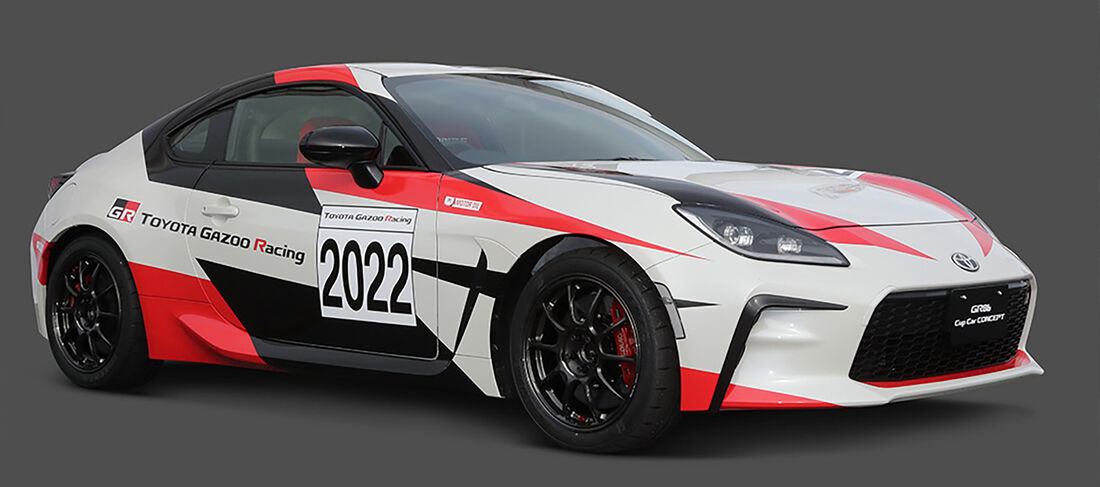
In more racing news, Stratasys just announced that it has been named an official partner of Toyota Racing Development (TRD), which is the automaker’s in-house tuning shop for both street cars and racing interests around the world. The partnership will make its debut with 3D printed production parts on the forthcoming Toyota GR86 for the GR Cup, a new single-make racing series sanctioned by SRO America.
“Additive manufacturing has allowed us to quickly iterate, design, and create parts for our race vehicles in a way that would have been far more expensive or labor intensive through traditional manufacturing methods,” said David Wilson, president of TRD. “By partnering with Stratasys we are able to advance our manufacturing practices beyond what is currently possible and really harness the possibilities of additive manufacturing for production parts.”
TRD is expanding its use of additive manufacturing from prototyping to end-use parts by integrating Stratasys Fortus 450mc, F370 and the new composite-ready F370 CR 3D printers into their manufacturing facilities in Salisbury, N.C. and Costa Mesa, Calif. The industrial-grade 3D printers will be used to create end-use parts, including an FDM Nylon 12CF hood vent for their new production vehicle the Toyota GR86, as well as to create a wide range of end-use parts across the TRD product portfolio.
Nexa3D & Williams Racing

It seems all F1 teams are scrambling to start making the most out of 3D printing and additive manufacturing technologies. In March 2021, multiple times championship winner Williams Racing formed a partnership with Nexa3D for the production of motorsports components.
Williams is now using the NXE400, Nexa3D’s industrial resin printer to manufacture functional wind tunnel parts for aerodynamic testing. According to the companies, the 3D printer — combined with the NexaX print preparation and management software — has enabled Williams to use modern computation architecture to accelerate the design process to develop lighter parts.
The software solution features fast slicing algorithms and automated support generation, which have allowed Williams to streamline their wind tunnel parts production pipeline. Its interconnectivity with other software tools has made it easy for Williams to plug NexaX into their workflows.
“We’re extremely excited to announce our partnership with Nexa3D and look forward to enhancing our additive manufacturing capabilities with their innovative high-speed printing technologies. Formula One is a challenging environment, that demands a continuous improvement philosophy in order to remain competitive,” said Al Peasland, head of technical and innovation partnerships at Williams.
Williams said the NXE400 platform allows it to design and manufacture complex, lightweight parts in mere minutes, as opposed to several hours when using traditional manufacturing. At the same time, the racing team can minimize material consumption and waste.
3D Systems & Alpine F1

The Alpine F1 Team (formerly Renault F1 Team) is one of the earliest adopters of 3D printing technology in the racing series. Alpine has been using 3D Systems technologies since 1998, and their collaboration continues to this day.
“At the end of a racing season, we expect our race car to be in excess of a second per lap quicker than when we started, and our technical partners have to survive the same ruthless selection. We aren’t interested in relationships that don’t bring value in our quest for performance,” said Nick Chester, technical director at Alpine F1 Team.
Alpine uses a wide range of 3D Systems printers, from SLA and SLS printers in R&D and design validation to metal 3D printers for on-car parts.
“The number of on-car components produced with additive manufacturing grows every year, with considerable benefits to the team in terms of design versatility and reduced production times and costs,” explained Chester.
In R&D, the two partners aren’t just optimizing part weight and aerodynamics. In 2021, 3D Systems launched the new Accura Composite PIV resin material, developed in collaboration with Alpine. This new composite resin has been developed specifically for particle image velocimetry (PIV) applications in wind tunnel testing models.
According to Alpine, the Accura composite has enabled it to maximize its wind tunnel investment and better understand airflow across its F1 race car. The racing team can produce the 600 parts per week it needs for wind tunnel testing alone using additive manufacturing.
“We couldn’t come close to doing that conventionally. We’d need a machine shop the size of a small city,” said Patrick Warner, advanced digital manufacturing manager at Alpine F1 Team.
For on-car parts, Alpine also uses SLA and SLS technologies to print complex jigs and fixtures, alongside fluid flow rigs, in hours instead of weeks. As a result, the team has been able to improve car speed and fuel efficiency through lighter parts.
Alpine is also printing molds for investment casting and exploring direct metal 3D printing. For example, it printed a complex dampening coil from titanium. The 3D printed part features thin, adjacent walls, which reduced its weight. The single-part digital design also allowed Alpine to fit the part perfectly into limited space within the gearbox main case.
“We designed this part to be as volumetrically efficient as possible, and to share wall thickness between adjacent tubes. Achieving this volume is only possible with AM,” said Warner.
HP & Nissan Motorsports

Auto enthusiasts often enjoy driving classic cars, many of which can be nearly a century old. But with old vehicles comes a difficult problem. It’s extremely challenging or simply impossible to find spare parts for them.
This is frustrating not only to the drivers but the carmakers as well. They would love to keep serving fans of their previous models, but traditional manufacturing methods require car parts to be produced in large quantities. If only a handful of classic car fans need a certain spare each year, this is simply not an economical solution.
Nissan faced this problem with their old but still popular R32 Skyline GT-R. Discontinued in 1994, the Japanese auto manufacturer was quickly running out of plastic harness protectors for the vehicle. To resolve their issue, the company turned to HP and their Jet Fusion 3D printers. Nissan is now again producing obsolete spare parts on a made-to-order basis through its Nissan Motorsports International Heritage Parts program.
“Manufacturing has to transform itself to be more agile to respond to the changing needs of our customers in the automobile sector,” said Kentaro Yuge, assistant manager at Nissan Advanced Material and Process Laboratory. The automaker also added that the harness protector was only the first product identified for additive manufacturing. Nissan is working to introduce new parts to its 3D printing catalog.
HP has also helped Jaguar tackle a similar issue. Although the automaker has been using 3D printing in product development for years, it only began to use it in spare parts production in 2019.
That’s when Jaguar started offering a 3D printed squab handle for the Land Rover Discovery 2, which ceased production in 2004. The squab handle is the part you pull to adjust the seat angle. It’s a commonly replaced part on the Discovery 2, but the original third-party manufacturer has long since gone out of business.
Using the original blueprints, the Jaguar team reverse engineered the part and created a printable 3D model. Thanks to 3D technology, they could also reinforce the handle’s construction with a cross structure in the ribbing. As a result, Jaguar can now offer legacy parts where the flaws of the original design have been corrected.
MakerBot & Prodrive

Prodrive is a British engineering and motorsports company that designs, builds, and races cars for other teams and companies, such as Aston Martin. In 2021, the company entered the legendary Dakar Rally under the Bahrain Raid Xtreme (BRX) team, in partnership with the Kingdom of Bahrain.
The Dakar Rally is demanding for both drivers and cars. Teams need a constant supply of spares for every car component to keep their vehicles in the race. But the COVID-19 pandemic made attending the 2021 rally difficult for Prodrive and BRX.
“In the UK, there was a lockdown that effectively forced us to close the factory for a while. Development that should have taken about a year was compressed into nine months. Instead of testing in July, we didn’t end up turning a wheel on a car until October 2020,” said Paul Doe, Prodrive’s chief engineer.
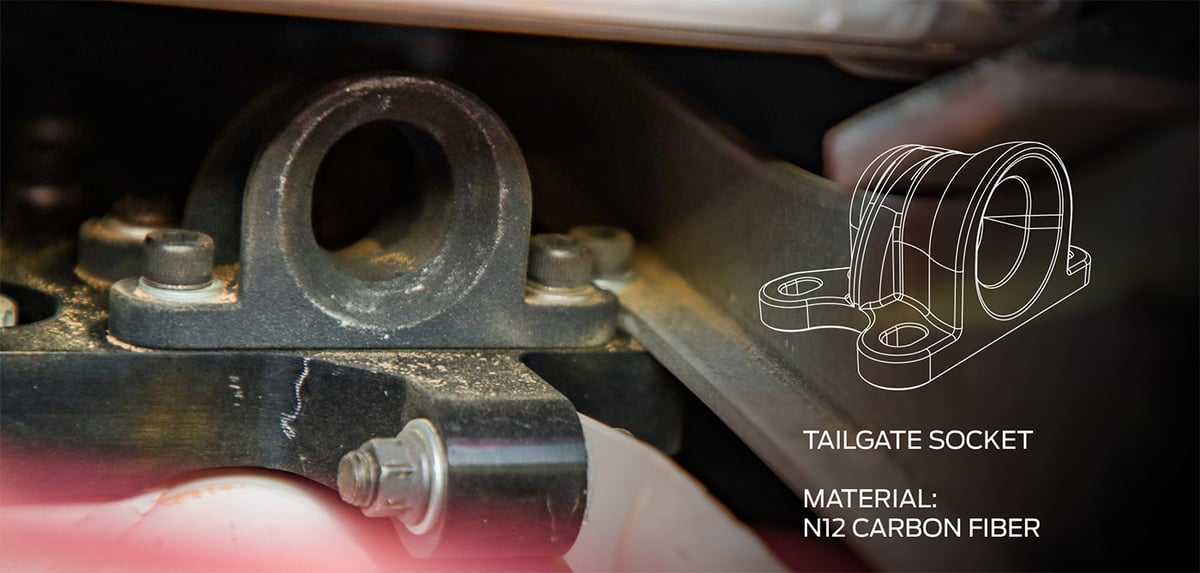
Due to the time crunch, Prodrive couldn’t manufacture the parts they needed through traditional methods. They got the manufacturing boost they needed from MakerBot’s Method X 3D printer. Thanks to the machine, Prodrive could increase the pace of its design and prototyping processes.
“There is a massive list of benefits from using the MakerBot Method X compared to normal production, such as speed and responsiveness. When it came to designing parts on the car, the first thought often starts with printing a part off the 3D printer to see how it would turn out. The ability to try the part first before committing to the final product allows us to make changes easily and quickly. This rapid iteration also allows us to stay pretty close to our production timeline, while also saving us a ton of money,” Doe explained.
When they finally attended the rally, Prodrive took the printer with them to the Dakar desert. Housed in a track, the company printed more than 30 parts for the car while actively testing it in the middle of nowhere.
Among the parts was a mount for a suspension position sensor. Prodrive printed the part using MakerBot’s carbon-fiber-reinforced Nylon material. The entire production process, from design to installation, took the company only one and a half hours. Additive manufacturing didn’t impress Prodrive just with its speed, but also with the capabilities of the material.
“There are quite a bit of parts in the car, such as the engine bays and wheel side near the brakes, where the environments reach up to 120°C and where traditional FDM materials start to struggle, forcing us to revert to aluminum which is costly. In this case, we were able to print parts in nylon carbon fiber which is able to reach very high temperatures,” said Doe.
“With the density of the materials we used being so low in comparison to traditional aluminum or steel fabrications, we were able to make parts that were much lighter than what a typical part would have been. And it allowed us unlimited freedom to effectively test our parts.”
nScryprt & Larsen Motorsports

Jet racing is a form of drag racing where the cars are propelled forward by powerful jet engines. These dragsters can reach top speeds upwards of 300 miles per hour within only a quarter of a mile. Larsen Motorsports is a Florida-based team that both develops and races these incredible vehicles.
Although Larsen is constantly pushing the limits of technology with its jet cars, it faced an issue with aged parts.
“The jet racing industry-standard afterburner fuel pumps that most jet cars use were produced in the 1960s. We have a very large inventory of surplus afterburner fuel pumps, but all of them have seals that are now deteriorated beyond serviceability,” explained Larsen Motorsports CEO, Chris Larsen.
Without the gasket, fuel could leak out from the pump and ignite with disastrous consequences. However, producing replacement gaskets isn’t easy. The gasket material has to be able to withstand both the intense temperatures of the jet engine and contact with jet fuel.
Looking for a solution, Larsen met nScrypt, a company producing high-precision microdispensing and digital manufacturing equipment. It suggested that Larsen could 3D print the gaskets using high-performance thermoplastics.
“When nScrypt showed us how we could 3D print new seal sets, we were instantly interested. We are now testing the nScrypt 3D printed seals currently with a 100% success rate,” Larsen said.
The 3D printed gaskets are manufactured from PEEK, which provides them the necessary high mechanical strength and chemical resistance. The material is also temperature-resistant and maintains its properties even when subjected to high heat. During tests, the PEEK gaskets were soaked in jet fuel for six months before installation — and they still performed perfectly.
In addition to the fuel pump gaskets, nScrypt said they’re also exploring the possibility to install 3D printed electronics in Larsen’s Gen 6 jet dragster.
In May, 2022, Larsen Motorsports has announced an official affiliation with the Florida Institute of Technology’s Center for Advanced Manufacturing and Innovative Design to develop a 3D printed steering wheel.
Shining 3D & Sautter Historic Racing

Motorsports have been a thing practically as long as there have been two engine-powered vehicles on the planet. Many old race cars, however, have been lost to time. Sautter Historic Racing seeks to preserve this piece of history by building and restoring historic vehicles.
It can be difficult to properly restore old cars due to the lack of spares and design blueprints, which often leads to Sautter having to reverse engineer vehicles. In partnership with Shining 3D, Sautter is now using 3D technologies to make this daunting task easier.
The Ford GT40 is a legendary vehicle, best known for its battle against Ferrari at the 1966 Le Mans 24-hour endurance race. Using Shining 3D’s FreeScan UE 11 handheld laser scanner, Sautter has been able to digitize the entire frame of the GT40 into a single 3D model. According to Sautter, the scanned model is so accurate that even tiny screw holes are visible on it.
Together with Verisurf’s Offline Scan Data Suite, Sautter can perform quality control, inspection, and part design processes to reverse engineer parts of the car with no existing CAD data. The Sautter team can verify the precise part fit when creating new 3D models for parts whose original copies are rusted and forgotten.
Autodesk, Renishaw & Stewart-Haas Racing

Stewart-Haas Racing is a championship-winning NASCAR organization, racing in the top two NASCAR series. They have a simple mission — to win. To achieve its understated goal, Stewart-Haas is constantly looking to improve every part of its cars.
But in a NASCAR race, it’s not enough to reach high speeds — drivers must also be able to slow down effectively. Stewart-Haas wanted to improve the brake pedal design in the No. 41 Ford Mustang driven by Cole Custer. However, the racing team’s endless push for excellence had exhausted the options traditional manufacturing could offer.
“We undertook the brake pedal project primarily for weight savings. Our existing brake pedal design was designed and manufactured using traditional methods. Through previous iterations and revision, we could no longer produce or realize any additional weight savings,” said Walter Mitchell, engineering integration manager at Stewart-Haas Racing.
Since traditional methods no longer worked, Stewart-Haas turned to additive manufacturing. Using Autodesk Fusion 360, the racing organization ran generative design algorithms to design a new kind of brake pedal that would’ve been impossible to manufacture with traditional tooling. This new design promised to be not only lighter but also improve driver safety.
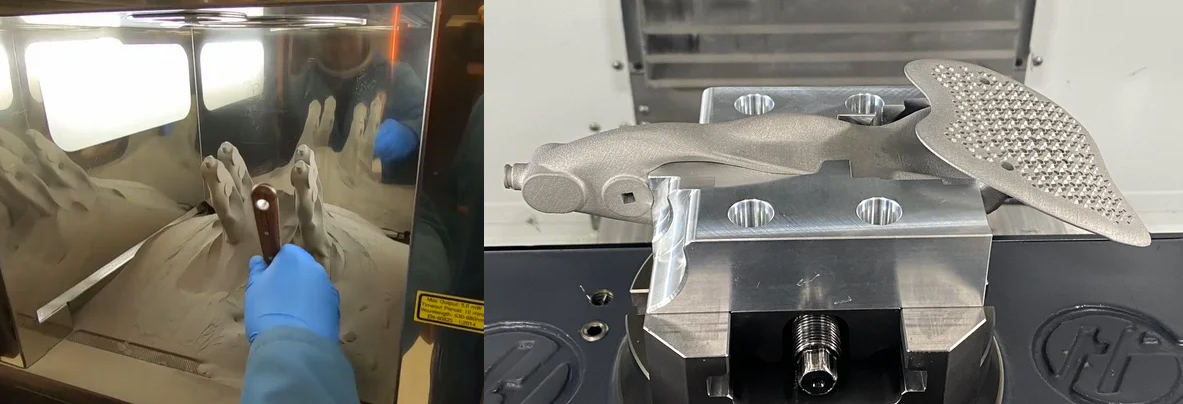
Stewart-Haas printed the pedal with a Renishaw RenAM 500Q quad-laser metal SLS printer. This 3D pedal was 32% lighter and 50% stiffer than the previous iteration. But could it perform in an actual race?
“We tested the pedal on an in-house designed test rig to simulate normal braking events over multiple race distances. We set the pedal up in a fixture to simulate a driver input load under normal braking conditions of 150 pounds, as well as panic braking loads of 350 pounds. Those braking events were conducted at a cycle of 6,000 events, which represents 3,000 laps of braking. And the pedal withstood all of those loads and cycles flawlessly,” Mitchell said.
All in all, the brake pedal project took only two months from design to installation in Custer’s Mustang.
“Being able to utilize both Autodesk generative design and Renishaw’s metal printing capabilities will unlock doors that were previously unavailable to increase performance, reach higher speeds, and decrease lap times,” Mitchell concluded.
License: The text of "3D Printing is Revolutionizing Motorsports" by All3DP Pro is licensed under a Creative Commons Attribution 4.0 International License.